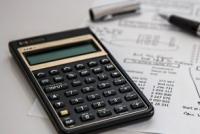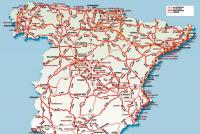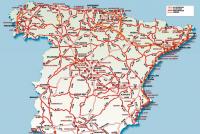Basics of organizing computer processing of economic information. Using computer programs for analyzing the financial condition of the organization processing of economic information in the organization
Content
3. Organization of computer processing of economic information 3
15. Analysis of capital placement and assessment of the property status of an enterprise 7
Task 1 15.
Task 2 18.
Task 3 19.
References 21.
3. Organization of computer processing of economic information
Economic information displays the facts of production and economic activity with the help of a system of natural and cost indicators. Economic information is usually transmitted and processed in the form of signs recorded on various substances, carriers. The totality of the signs used to exchange economic information in a certain economic system forms the language of economic information.
Analytical processing of economic information is very laborious, therefore the efficiency and effectiveness of economic analysis are significantly increasing when using modern information processing technologies. Computational tools that have enterprises and organizations make it possible to fully automate the processing of economic information, including on the analysis of enterprises. The need to automate economic analysis is due to the strengthening of the importance of economic management methods: the need to develop and substantiate promising business plans, a comprehensive assessment of the effectiveness of short-term and long-term management decisions.
In this regard, the organization of computer processing of economic information becomes an objective necessity. This trend is due to the increase in the value of high-quality information services for the management of economic activities, the rapid development of the technical capabilities of modern computers, the features of the present period of the economy.
The most efficient organizational form of using PEVM is the creation of automated workplaces (ARMS) of accountants, economists, planners, etc. Under the automated workplace, the analyst understands a professional-oriented small computing system designed to automate work on the analysis of economic activities. The technical base of AWS analytics is personal computers of domestic and foreign production.
The most effective form of operation of AWS is to compound them into a single computing network of analytical support for the economic activity of the enterprise.
Experience in the design of AWS analytics and other systems makes it possible to summarize the requirements for their operation: timely satisfaction of the computational and information needs of the economist when analyzing economic activities; minimum response time to analytical queries; the possibility of presenting output information in tabular and graphical form; the possibility of making adjustments to the calculation method and in the form of display of the final result; Repeating the process of solving the problem with any arbitrarily given point (stage) of the calculation; the ability to work in the computing network; Easy to master the techniques of work on the AWP and the interaction of the system of the human system.
Within the framework of the AWP Analysis, the entire enterprise information fund is functioning in the database form, knowledge base and software. Databases are factual data on economic activity. The intellectual shell of their useful readings are knowledge bases - methods and methods of analysis. Software tools form an automated execution tool for analytical tasks for information service.
At the same time, a number of signs are characterized to organize the comewined processing of economic information:
First, the preservation of the integrity of the analysis under the condition of decentralized information processing. In the theory of analysis of economic activity, a lot has already been done to achieve systematic, functional, technical, methodological and information compatibility of component parts of the analysis into a single integer. Due to this, the objectivity of the analysis and its accuracy are achieved. In the conditions of decentralized information processing, the integrity of the analysis does not destroy, the unity of the objectives and objectives of the analysis is not canceled from the point of view of its system properties. Therefore, we can say that a developed network of distributed databases corresponds to a system of distributed tasks of economic activity, individual AHD tasks, intermediate results, etc.; No matter how important they are, the CHERV5 is the prism of the general integrated analysis system implementing all private tasks.
Secondly, the connection of the processing process of information with the decision-making process. Centralization of information processing in powerful MCs, characteristic of the ASU of the older generations, ......
List of references
1. Abryutin M.S., Grachev A.V. Analysis of the financial and economic activity of the enterprise: studies. Manual / M.S. Abryutin, A.V. Grachev. - M.: Case and Service, 2007.- 257С.
2. Bakanov M.I., Sheremet A.D. Economic analysis theory: studies. Manual / M.I. Bakanov, A.D Sheremet. - M.: Finance and Statistics, 2009. - 218 p.
3. Berdnikova T.B. Analysis and diagnosis of financial and economic activity of the enterprise: studies. allowance / TB Berdnikova. - M.: Infra-M, 2009. - 215c.
4. Codrakov N.P. Fundamentals of financial analysis: textbook / N.P. Kondrakov. - M.: Glavbukh, 2007. - 114 p.
5. Lyubushin N.P. Comprehensive economic analysis of economic activities: textbook / N.P. Lyubushin. - M.: Uniti, 2008. - 445 p.
6. Nikolskaya E.V., Lozinskaya V.B. Financial analysis: studies. Manual / E.V. Nikolskaya, VB Lozinskaya. - M.: MGAP World of Book, 2007.-316С.
7. Pyatsololov S.M. Analysis of the financial and economic activity of the enterprise: studies. Manual for universities / S.M. Confinal. - M.: Mastery, 2008. -336c.
8. Savitskaya G.V. Analysis of the economic activity of the enterprise: Textbook / G.V. Savitskaya. - M.: Infra-M, 2007. -336c.
9. Enterprise management and analysis of its activities: Textbook / S.Yu. Naumov - Saratov: Publishing House of Saratov University, 2008. - 318С.
10. Chechevitsyn L.N. Economy of the company: Tutorial / L.N. Chechevitsyn. - Rostov N / D: Phoenix, 2008. - 389 p.
In the decision-making system, the data obtained by analyzing the financial condition of the Organization is one of the most essential elements. Almost all users of data accounting and financial reports use financial analysis techniques to one degree or another.
Taking risky decisions in production, the manager can lead the organization to bankruptcy or to the fact that the enterprise will have large financial problems. Therefore, a large number of software products are being developed that can analyze accounting data and financial reporting and output rather accurate data on the state of affairs in the organization. The cost of such computer programs, as a rule, ranges from 0 to 1000 dollars per program, and the price does not always correspond to quality - even free programs can give a good result.
In this course, I reviewed the most famous domestic programs in our country for the diagnosis of financial condition in order to compare them in different parameters: ranging from the cost of a specific program, the ability to export data for analysis from other programs (most often "1C: Enterprise" of 1C "), And ending with the ability to submit data in English.
This work consists of two parts: the first part describes the theoretical approach to the financial diagnostics of organizations, and in the second part there is a description of the specific programs for conducting financial analysis, their main characteristic is given and it is concluded that for which enterprises this program is most suitable.
1. General scheme of financial diagnostics
1. 1. Essence, goals and types of financial status evaluation
Currently, the financial condition of the organizations is interpreted from various positions, while there is no unified methodological approach to its definition, which makes it difficult to build universal practical analysis techniques.
In general, the financial condition of the enterprise can be defined as a comprehensive economic category, which characterizes the availability of the enterprise of various assets, the amount of obligations, the ability of the business entity to function and develop in a changing external environment, the current and future opportunity to meet the requirements of creditors, as well as its investment attractiveness .
Of the various interpretations of the concept of financial condition, various purposes of its assessment flow. From the point of view of business diagnostics, the result of the analysis of the financial state is to determine the optimal value of the reserves of the enterprise, which should be sufficient to ensure the normal solvency of the enterprise and minimize the costs of financial risk, and, at the same time, do not distract redundant working resources from the current economic Activities.
There is also an analysis orientation for the search and elimination of intrafivery problems:
The main purpose of analyzing the financial condition is the assessment and identification of the company's internal problems for the preparation, justification and adoption of various management decisions, including in the field of development, exiting the crisis, transition to bankruptcy procedures, buying and selling a business or a package of shares, attracting investments.
The goals led to the need to solve a number of analytical tasks. In the domestic literature, the following basic groups of internal analysis of the financial condition of the enterprise are allocated:
1. Identification of the financial situation.
2. Detection of changes in financial condition in a space-time section.
3. Identifying the main factors that caused changes in financial condition.
4. Timely identification and elimination of deficiencies in financial activities, and find reserves for improving the financial condition of the enterprise and its solvency.
5. Forecasting possible financial results, economic profitability based on the actual conditions for economic activities and the availability of its own and borrowed resources, the development of financial statements with various use of resources.
6. Development of specific measures aimed at more efficient use of financial resources and strengthening the financial condition of the enterprise.
The assessment of the financial state can be carried out using a different type of models to be structured and identify the relationship between the main indicators. There are three main types of models, descriptive, predicative and regulatory.
Descriptive models, known as descriptive models, are basic to assess the financial condition of the enterprise. These include: Building a system of reporting balances, representing the financial statements in various analytical cuts, a vertical and horizontal reporting analysis, a system of analytical coefficients, analytical notes for reporting. All these models are based on the use of accounting information.
Predicative models are models of predictive, prognostic nature. They are used to predict the income of the enterprise and its future financial state. The most common of them are: calculation of the point of critical sales, building prognostic financial reports, models of dynamic analysis (rigidly deterministic factor models and regression models), situational analysis models.
Regulatory models allow you to compare the actual results of enterprises with expected results calculated by the budget. These models are used mainly in domestic financial analysis. Their essence is reduced to the establishment of standards for each item of the costs of technological processes, types of products, centers of responsibility and to analyze deviations of actual data from these standards. The analysis is largely based on the use of rigidly deterministic factor models.
Depending on the specified areas, the analysis of the financial condition can be carried out in the following forms:
1. Retrospective analysis (designed to analyze the current trends and problems of the company's financial condition, while it is believed that enough quarterly reporting for the last reporting year and the reporting period of the current year).
2. A promising analysis (necessary for the examination of financial plans, their validity and reliability from the standpoint of the current state and the available potential).
3. A factory analysis (required to evaluate and identify the reasons for deviations of reporting indicators from planned).
1. 2. The procedure for evaluating the financial condition
As a rule, the basic information base for financial analysis is the forms of annual and quarterly accounting reports, analytical reports, data obtained by independent expertise.
General qualitative analysis is one of the initial stages of assessing the financial condition of the organization. At this stage, the accuracy of the reporting provided, the quality of accounting, organized at the enterprise, studies the degree of compliance of the monetary assessment of assets and obligations to their real market quantities, with high-quality positions, the intangible sector of the enterprise is estimated: business reputation, established business relations, level of training and management management, Flow and professionalism of personnel, prospects for the development of the industry and target markets of the enterprise, the stages of the life cycle of the main goods of the enterprise, etc. Such procedures can be carried out using SWOT - analysis methods, the construction of matrices of the comparative competitive advantages of the enterprise and local problem areas, "bottlenecks". It can also be done at this stage a vertical and horizontal financial analysis.
The coefficient analysis is the calculation of coefficients in various directions (Appendix 2):
Indicators of the assessment of the property situation.
Indicators of estimates of liquidity and creditworthiness.
Indicators of valuation of financial stability.
Indicators of business activity.
Return estimates.
This area traditionally plays a basic role in analytical procedures in assessing the financial condition of the enterprise. The transition from absolute indicators to the relative is due to the following factors:
The influence of the size of the company on the final indicators is eliminated, it becomes possible to evaluate not only the size, but also the effectiveness of the functioning of the enterprise;
Since the numerator and denominator are expressed in one units, the influence of inflationary processes and currency exchange rates will increase, it becomes possible to compare enterprises of various countries;
The comparison base to assess this or that financial indicator can be:
1. Regulated by documents and legislative acts of the corridors of regulatory values.
2. Scientific and informed optimal values \u200b\u200bof indicators.
3. Middle-wide values \u200b\u200bof indicators.
4. Characteristics of analog enterprises.
5. Dynamics of own indicators for previous periods.
The influence of problematic situations arising from the interpretation of financial coefficients to a certain extent allow to level the integral models for assessing the financial state, based on the calculation of a small number of financial indicators in a comprehensive assessment. At the same time, these models allow you to attribute an enterprise to a particular group with a corresponding set of characteristics. On the basis of such an analysis, the possibility of absolute assessment of the financial situation of the enterprise on a specific date, and not just the study of its changes and comparative analysis. Also, integral techniques are convenient for express analysis of the financial condition, since they do not require significant costs of time and resources.
In the general block of integrated techniques, the following conceptual directions can be distinguished:
1. Statistically substantiated models of predicting possible bankruptcy. Altman indicators are used here (known as Z account, z indicator or credit index), Lisa model, Taffler model, ISEA model, Fulmer model, SpringTee model, and others (Appendix 3).
2. Methods for determining the rating of the organization for lending purposes. Here are techniques developed by various commercial banks. Examples can serve as a model developed by Sberbank of the Russian Federation, the Moscow Industrial Bank, as well as other financial institutions (Appendix 4).
3. Methods of ranking organizations. Here is the method of the amount of seats, the average geometric method, the method of significance coefficients and distance method (Appendix 5).
Based on the data obtained during the assessment of the financial condition of the enterprise, the expert group concludes about the financial condition of the organization.
|
Users |
Scope of economic interests in the assessment |
|||||||||||||||||||||||||||||||||||||||||||||||||||||||||||||||||||||||||||||||||||||||||||||||||||||||||
|
Owners |
Evaluation of the expediency of the costs of the costs and the financial results achieved financial sustainability and competitiveness, opportunities and prospects for further development, the effectiveness of the use of borrowed funds, detecting losses, unproductive expenses and losses, drawing up reasonable forecasts about the financial consistency of the enterprise. |
|||||||||||||||||||||||||||||||||||||||||||||||||||||||||||||||||||||||||||||||||||||||||||||||||||||||||
|
Shareholders |
Analysis of the composition of management costs and evaluation of their feasibility, an analysis of profit formation, an analysis of losses, non-production costs and losses, a structural analysis of spending profit on accumulation and consumption, assessment of effective and conducted dividend policies. |
|||||||||||||||||||||||||||||||||||||||||||||||||||||||||||||||||||||||||||||||||||||||||||||||||||||||||
|
Banks and creditors |
Evaluation of the composition and structure of property of the enterprise, analysis and assessment of the solvency and financial sustainability of the enterprise, assessing the efficiency of using its own and borrowed capital, analysis of the composition, structure and relationship of receivables and accounts, assessment of settlements on previously obtained short-term and long-term loans and loans. |
|||||||||||||||||||||||||||||||||||||||||||||||||||||||||||||||||||||||||||||||||||||||||||||||||||||||||
|
Suppliers and buyers |
Evaluation of the liquidity of current obligations, the presence of overdue receivables and payables, analysis and assessment of the structure of current assets, an assessment of solvency and financial sustainability. |
|||||||||||||||||||||||||||||||||||||||||||||||||||||||||||||||||||||||||||||||||||||||||||||||||||||||||
|
Tax inspections |
Assessment of the reliability of data on the taxable basis for the calculation of federal and local taxes and their transfer to the budget |
|||||||||||||||||||||||||||||||||||||||||||||||||||||||||||||||||||||||||||||||||||||||||||||||||||||||||
|
Extrabudgetary funds |
Assessment of the accuracy of information on the average number of working enterprises and the accrued remuneration fund, assessing the timeliness of settlements with extrabudgetary funds. |
|||||||||||||||||||||||||||||||||||||||||||||||||||||||||||||||||||||||||||||||||||||||||||||||||||||||||
|
Investors |
Evaluation of the efficiency of using its own and borrowed capital, receivables and payables, enterprise property, assets, analysis of the degree of liquidity of repayment of short-term and long-term liabilities, financial stability. Analysis and evaluation of the effectiveness of long-term and short-term financial investments at the expense of own funds of the enterprise. |
|||||||||||||||||||||||||||||||||||||||||||||||||||||||||||||||||||||||||||||||||||||||||||||||||||||||||
|
Mestern labor |
Evaluation of sales dynamics, product costs, performance of production tasks and compliance with labor legislation on labor payments, the provision of labor and social benefits at the expense of the company's net profit. 2. The share of fixed assets in assets \u003d 120/300 3. The value of own working capital \u003d 290 - 230 - 690 4. Madrigence of own working capital \u003d 260 / (290-230-690) 5. Current liquidity ratio \u003d (290-230) / 690 6. Faster liquidity ratio \u003d (290-210-220 -230) / 690 7. The absolute liquidity ratio \u003d 260/690 8. The proportion of working capital in assets \u003d (290-230) / 300 9. The proportion of own working capital in the total amount of them \u003d (290-230 -690) / (290-230), or (490 + 590-190) / 290-230 10. The proportion of reserves in current assets \u003d (210 + 220) / 290 11. The proportion of own working capital \u003d (290-230-690) / (210 + 220) 12. Own capital concentration coefficient \u003d 490/300 13. The coefficient of financial dependence \u003d 300/490 14. Own capital maneuvenence ratio \u003d (290-230-690) / 490 15. The concentration coefficient of the borrowed capital \u003d (590 + 690) / 300 16. The coefficient of the structure of long-term investments \u003d 590 / (190 +230) 17. The coefficient of the ratio of borrowed and own funds \u003d (590 +690) / 490 18. FDOOUTDACH \u003d F.2 10/120 19. Own capital turnover F.2 10/490 20. Turnover of cumulative capital F.2 10/300 21. Net profit \u003d F.2 10 22. Profitability of products \u003d F.2 50 / f. 2 10. 23. Profitability of cumulative capital \u003d F.2 190/300 24. Profitability of equity \u003d f. 2 190/490 25. The payback period of own capital \u003d 490 / F.2 190 Appendix 3. "Bankruptcy forecasting models"1. The coefficient of Altman (2 factor): Z \u003d -0.3877-1,0736 * (290/690) + 0.0579 * (300/490) If z \u003d 0, then the probability of bankruptcy \u003d 50% If z\u003e 0, then the probability of bankruptcy\u003e 50% If Z<0, то вероятность банкротства < 50% 2. Altman coefficient (5 factor): Z \u003d 1,2 * (((290-690) / 300) + 1.4 * (F.2 190) / 300 + 3.3 * ((f. 2 050) / 300) + 0.6 * (price Shares / (590 + 690)) + F.201/01/300 If Z<1,81 – организация банкрот. If z\u003e 2.99 - financially sustainable enterprise. If Z<=2,99 и Z>\u003d 1.81 - uncertainty. 3. Tafflera model Z \u003d 0.53 * (F.2 050/690) + 0.13 * (290 / (690 + 590)) + 0.18 * (690/300) + 0.16 * (F.2010 / 300 ) If Z\u003e 0.3 - Financially Sustainable Enterprise If Z<0,2 – организация банкрот. 4. ISEA model R \u003d 8.38 * (290/300) + (f. 2 190/490) + 0.054 * (F.2 010/300) + 0.63 * (F.2 190 / (F.2 020 + 030 + 040 + 070 + 100 + 130)) If R.< 0 – максимальная (90 – 100%) If R\u003e 0 and R< 0,18 – Высокая (60 - 80%) If R\u003e 0.18 and R< 0,32 – Средняя (35% - 50%) If R\u003e 0.32 and R< 0,42 – Низкая (15% - 20%) If R\u003e 0.42 is minimal (up to 10%) Appendix 4. "Credit Rating Models"1. Indicators for assessing the financial condition of the enterprise as a borrower on the basis of "Rules for the provision of loans to legal entities by Sberbank of Russia and its branches 285-p" K1 \u003d (260 + 253) / (690-640-650) K2 \u003d (260 + 250 + 240) / (690-640-650) K3 \u003d 290 / (690-640-650) K4 \u003d 490 / (590 + 690-640-650) K5 \u003d 50 F.2 / 10 F.2 Then you need to determine the category for each of the indicators depending on its actual value:
| |||||||||||||||||||||||||||||||||||||||||||||||||||||||||||||||||||||||||||||||||||||||||||||||||||||||||
















